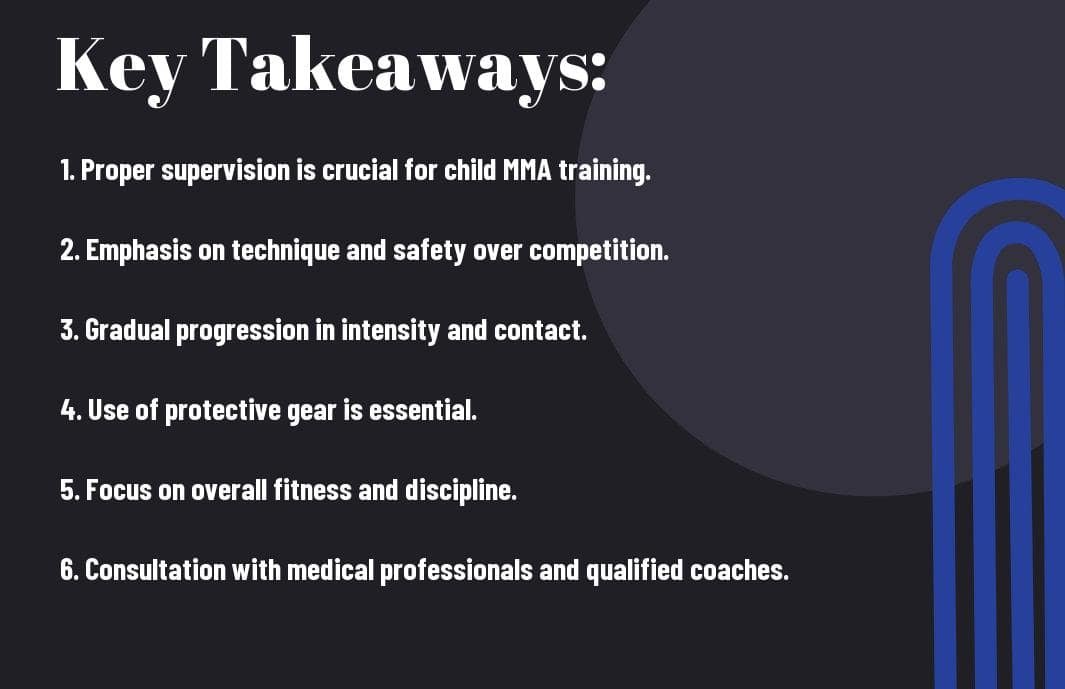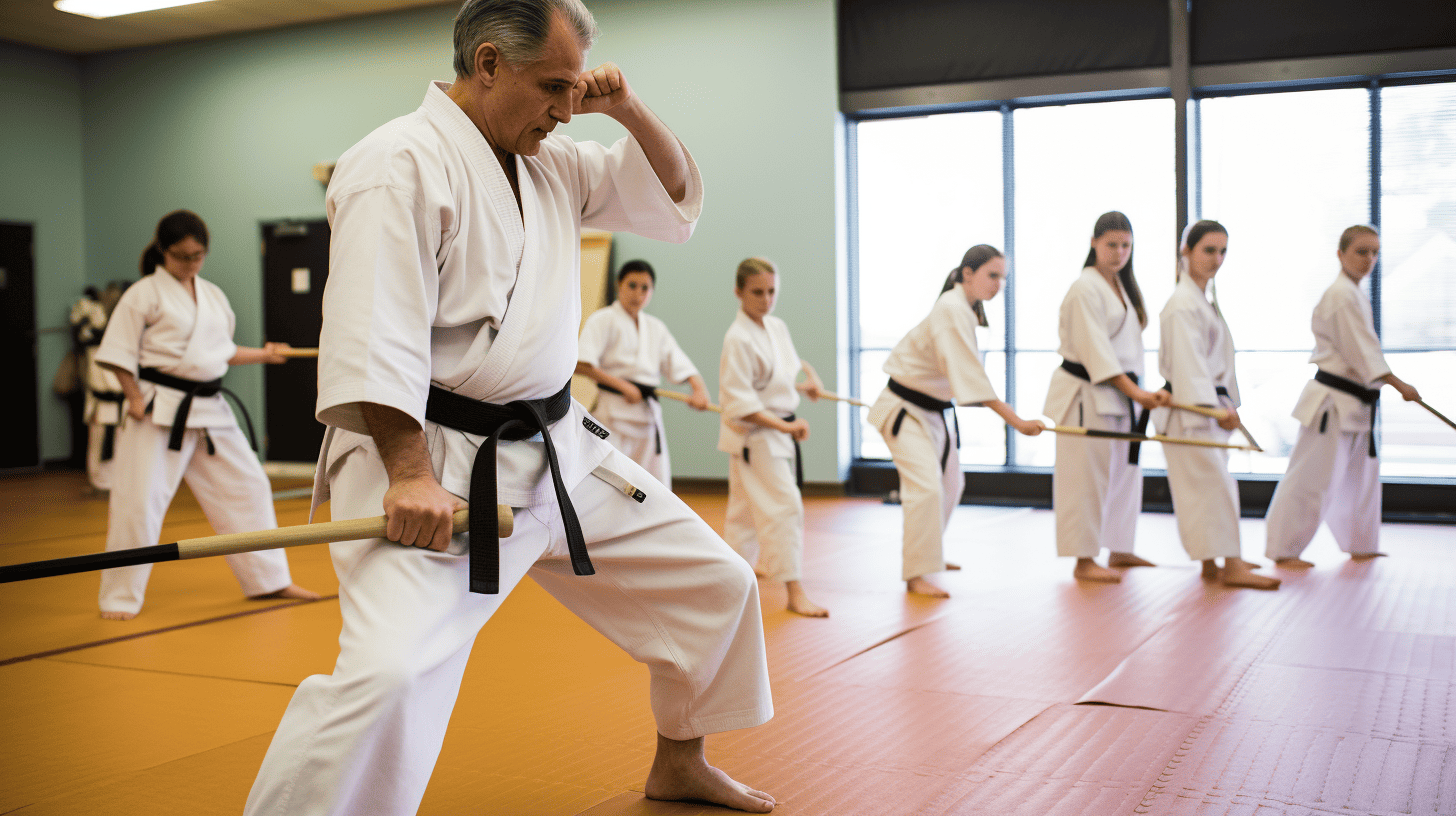While mixed martial arts (MMA) is a physically demanding contact sport, it can be safe and beneficial for children when approached with the right mindset and precautions. It is important to consider the potential risks involved in MMA training, such as injuries from intense physical contact and improper technique. However, with the proper supervision, coaching, and adherence to safety guidelines, MMA training can provide children with valuable self-defence skills, improved physical fitness, and confidence.
Key Takeaways:
- MMA training for children can be safe if supervised properly: With the right instructors and safety measures in place, children can learn MMA in a safe environment.
- Emphasis on proper technique and controlled sparring: It’s crucial for children to be taught the correct techniques and to engage in controlled, light sparring to reduce the risk of injury.
- Physical and mental development benefits: MMA training can help children develop strength, coordination, discipline, and self-confidence if approached in a safe and structured manner.
- Importance of age-appropriate training: Children should only be exposed to certain aspects of MMA training based on their age and skill level to avoid unnecessary risks.
- Open communication with parents and regular assessment: Maintaining open communication with parents and regularly assessing the children’s progress and well-being are essential in ensuring their safety and overall development in MMA training.

Understanding MMA Training
When considering MMA training for children, it’s important to have a thorough understanding of what the training actually entails. With the rise in popularity of mixed martial arts, many parents have concerns about its suitability for young participants. However, with the right approach and proper guidance, MMA training can be safe and beneficial for children.
Fundamentals of Mixed Martial Arts
Mixed martial arts (MMA) is a combat sport that incorporates techniques from various disciplines, including boxing, wrestling, Muay Thai, Brazilian Jiu-Jitsu, and more. The training focuses on teaching participants striking, grappling, and submission techniques, as well as honing physical fitness and mental discipline. While the physical demands of MMA training are intense, it also requires a great deal of mental agility and strategic thinking.
The Youth MMA Training Approach
When it comes to training children in MMA, the approach is significantly different from that of adult training. Youth MMA training takes a more structured and controlled approach, with an emphasis on safety and skill development. Coaches focus on teaching proper technique and form, while also instilling discipline and respect for the sport and fellow participants. It’s important to note that not all children may be suited for MMA training, and it’s crucial to assess a child’s readiness both physically and mentally before enrolling them in a program.
Safety Measures in MMA for Kids
When it comes to training children in Mixed Martial Arts (MMA), safety is paramount. Implementing the appropriate safety measures can significantly reduce the risk of injury and create a safe and enjoyable environment for young athletes to develop their skills and confidence.
Age-Appropriate Training Techniques
It is crucial to tailor the training techniques to the specific age and developmental stage of the child. Younger children should focus on learning the fundamentals of movement, coordination, and basic techniques, while older children can start to incorporate more advanced skills and strategies. It is important to avoid putting excessive physical demands on young bodies that are still growing and developing. Additionally, emphasising proper technique and form over power and strength can reduce the risk of injury and ensure a solid foundation for future progression in the sport.
Protective Gear and Safe Practice Environments
Equipping children with appropriate protective gear such as headgear, mouthguards, gloves, shin guards, and groin protectors is essential to minimise the risk of injury during training and sparring. Ensuring that the practice environment is safe and free from hazards is equally important. Mats should be clean, well-maintained, and provide adequate cushioning to reduce the impact of falls and takedowns. Coaches should also closely supervise training sessions to ensure that all participants adhere to safety guidelines and protocols.
Benefits of MMA Training for Children
When considering whether MMA training can be safe for children, it’s important to also examine the potential benefits that such training can offer. It’s essential to carefully weigh the pros and cons of MMA training for children, so let’s delve into some of the potential benefits to help you make a more informed decision.
Physical Health and Fitness
Engaging in MMA training can significantly improve your child’s physical health and fitness. Through regular practice, they can develop enhanced strength, agility, and cardiovascular endurance. The training involves a variety of exercises and movements that help to promote overall physical well-being. Furthermore, by participating in MMA activities, your child can learn the importance of discipline and commitment when it comes to maintaining a healthy lifestyle. Research also suggests that engaging in combat sports like MMA can improve bone density and decrease body fat percentage, contributing to a healthier body composition overall. If you’d like to explore more on this, check out this insightful post on the pros and cons of training your children in mixed martial arts (MMA).
Mental and Emotional Development
Aside from physical benefits, MMA training can also positively impact your child’s mental and emotional development. The discipline and focus required in MMA can help your child to become more self-assured, resilient, and disciplined. Learning MMA techniques involves mastering complex movements and strategies, which can enhance cognitive skills, problem-solving abilities, and decision-making capabilities. Additionally, the supportive environment of MMA gyms can provide children with a sense of belonging and friendship, contributing to their emotional well-being. This training can also help teach children important values such as respect, humility, and perseverance, which can be valuable traits in their personal and academic lives.
Potential Risks and How to Mitigate Them
When it comes to MMA training for children, it’s essential to be aware of potential risks and how to effectively mitigate them. While there are numerous benefits to kids participating in MMA, it’s important to also understand the potential risks involved. Here, we will dive into some of these risks and provide guidance on how to keep your child safe while training in MMA.
Common Injuries in Youth MMA Training
Common injuries in youth MMA training can include sprains, strains, and bruises, as well as more serious injuries such as fractures or concussions. These can occur during sparring, grappling, or even just while practicing techniques. It’s important to be aware of these potential risks and to ensure that your child receives proper instruction on technique and safety measures. 6 Benefits of Kids MMA
Implementing Safeguards and Professional Guidance
Implementing safeguards and seeking professional guidance is crucial in mitigating the potential risks of MMA training for children. Ensuring that your child has access to qualified instructors who prioritise safety and proper technique is essential. Additionally, having the right protective gear, such as mouthguards and headgear, can greatly reduce the risk of injury. It’s imperative to provide a safe and supportive environment for your child to train in, with professionally guided supervision to ensure they are learning in a controlled and safe manner.
Summing up
While MMA training can be safe for children when proper precautions are taken, such as the use of protective gear and qualified instructors, it’s important to be mindful of the potential risks associated with this contact sport. It’s crucial that you, as a parent or guardian, thoroughly research and consider the physical and psychological impact MMA training may have on your child before enrolling them in classes. Providing a safe and supportive environment for your child to learn and participate in MMA training will ultimately contribute to their overall well-being and development.
FAQ
Q: Is MMA training safe for children?
A: MMA training can be safe for children if proper precautions and supervision are in place. It is important for children to receive appropriate training and be under the guidance of qualified coaches.
Q: What are the potential risks of MMA training for children?
A: The potential risks of MMA training for children include injuries such as sprains, strains, and fractures. However, with the right safety measures and supervision, these risks can be minimised.
Q: Are there any age restrictions for children practicing MMA?
A: Many MMA gyms have minimum age requirements for children to start training, typically around 8-10 years old. It is important for children to have developed motor skills and maturity before beginning MMA training.
Q: How can parents ensure their children’s safety during MMA training?
A: Parents can ensure their children’s safety during MMA training by thoroughly researching the gym and coaches, ensuring proper safety equipment is used, and maintaining open communication with the coaches about any concerns
Q: What are the benefits of MMA training for children?
A: MMA training can benefit children by improving their physical fitness, coordination, discipline, and self-confidence. It also teaches important values such as respect and perseverance.
Q: How can children be taught the importance of sportsmanship in MMA training?
A: Coaches play a crucial role in teaching children the importance of sportsmanship in MMA training, focusing on respect for opponents and emphasising the non-violent aspects of the sport.
Q: What should children focus on during their MMA training?
A: Children should primarily focus on learning proper technique, respect for their training partners, and understanding the values of discipline and dedication in their MMA training.



